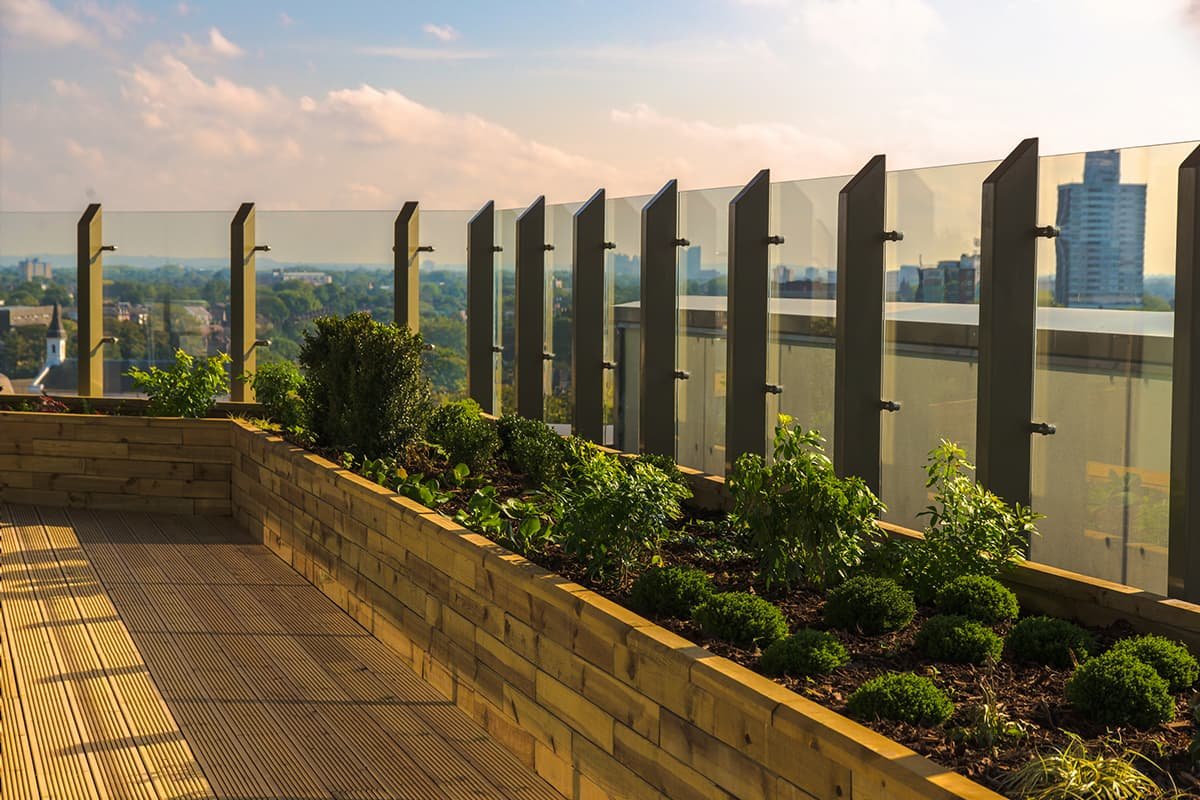Space to grow - the rise of rooftop gardens
Roof tops not only provide a solution to the lack of green space at ground level in cities, residential developments are using them to create vertical communities, whist businesses are utilising them as an employee perk and to increase productivity.
According to European Federation of Green Roof and Wall Associations, London now has more roof top garden space than Tokyo and Singapore; a space covering 371 acres sits on top of buildings including offices and apartments. There’s more planned too, Google’s latest development in Kings Cross will include a 300m sloping garden above its 11 floors and Battersea Roof Gardens, which has been drawn up by the team behind the New York High Line, includes a 1,200ft garden.
Lightweight landscaping options are ideal for roof gardens, our modular system has been specified for a number of podium and roof gardens, and the latest projects include Unite’s Staniforth House in the centre of Birmingham and the Victoria Centre Roof Garden in Nottingham. WoodBlocX takes a huge pressure of the logistical issues that arise with planning and implementing roof-top gardens as all components can be easily carries by one person, which is particularly helpful for tight spaces and can be unpacked from the delivery pallet and into a lift if crane hire is out for the question.
Hosta Consulting’s Helen Taylor used WoodBlocX in her practice’s design for the Victoria Centre Roof Garden; she has provided a brief insight into the key considerations for planning and installing roof gardens for public and private sector developments…
Community engagement
If the garden is part of a residential property it is important to begin community engagement exercises well in advance to ensure residents are aware of the plans and to get them involved in the process to establish their wants and needs, it is important to create a space that everyone can enjoy, therefore a mixture of elements will need to be considered.
Maintenance
For residential properties, successful community engagement can help to encourage residents to form a committee to manage maintenance. For commercial properties maintenance will be considered as part of the initial proposal, but in both instances there are ways that the amount of maintenance can be reduced, from plant selections to application of mulches.
Structural
Weight is a key factor for roof gardens, once the structural survey is complete and weight allowances have been set the initial designs can be created, some spaces will allow different weight distribution in different areas, this is important in the design process especially when the design incorporates heavier structures such as concrete or sculptures and also for organising the logistics of material deliveries.
Weather conditions
If the roof space is completely open, planting trees and tall plants should be avoided unless anchored, as the wind will blow them over, so low-level shrubs, miniature trees, bushes will work best.
Drainage
Roof gardens need adequate drainage but also need to retain water in order to ensure plants don’t dry out especially if the position of the garden means it is affected by winds accelerating transpiration rates. Using a green roof substrate that includes materials such as crushed brick will improve the porosity of the soil and soil improving agents such as peat free compost and biochar also help retain water and release beneficial nutrients into the soil.
Planting
Grasses, dwarf trees, evergreen shrubs, low-growing plant varieties such as saxifraga, phlox and geranium varieties or herbs thyme, lavender, sage and rosemary are ideal all for roof gardens. Edible gardens will need more care and water but all plants need nutrient support from composts and additives to form an ecosystem.
To find out more about our modular system and its suitability for roof gardens click here






